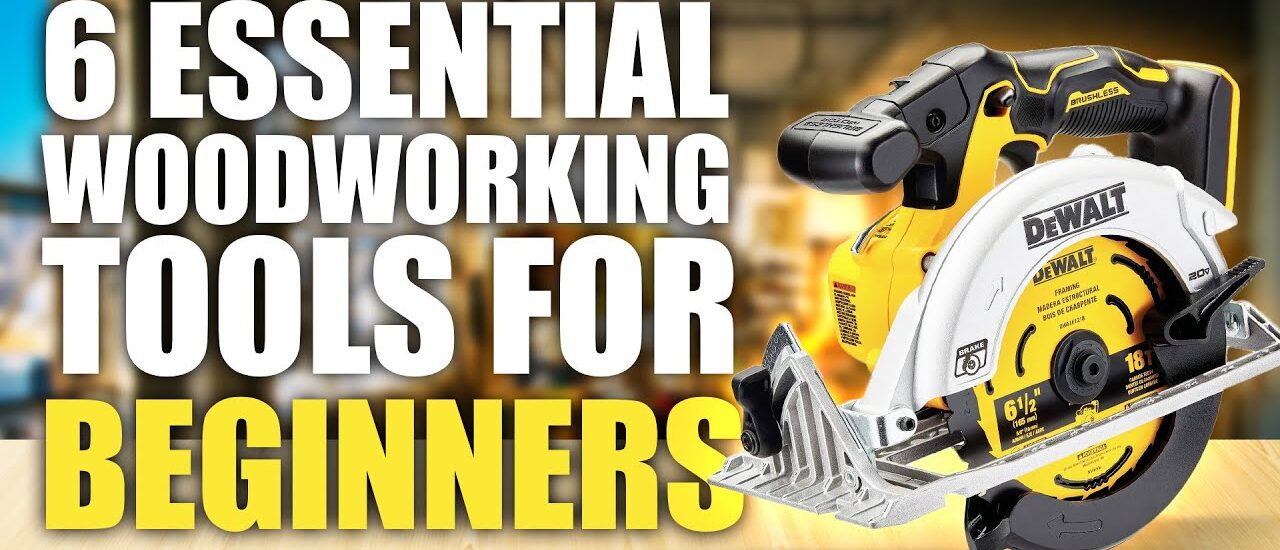Table of Contents
- 1. Table Saw: The Backbone of Your Workshop
- 2. Chisels: Essential for Precision Work
- 3. Hand Planes: Achieving Smooth Surfaces
- 4. Clamps: Keeping Your Projects Secure
- 5. Miter Saw: Precision Cutting for Joints and Trim
- 6. Router: Shaping and Profiling Wood
- 7. Drill Press: Accuracy and Versatility
- 8. Jigsaw: Cutting Curves and Irregular Shapes
- 9. Belt Sander: Efficient Surface Smoothing
- 10. Measuring Tools: Precision is Key
- Conclusion
1. Table Saw: The Backbone of Your Workshop
The table saw is often considered the cornerstone of a woodworking shop. Its versatility and power make it indispensable for cutting large sheets of wood, making precision cuts, and even performing complex joinery. When choosing a table saw, consider the following:
- Blade Size: Most table saws come with a 10-inch blade, but some models offer 12-inch blades for larger cuts. For more information on selecting the right blade, check out this guide to choosing the right table saw.
- Fence System: A high-quality fence system ensures accurate and repeatable cuts. Look for a fence that is easy to adjust and locks securely in place.
- Power and Motor: A more powerful motor (usually 1.5 to 3 horsepower) allows for smoother cuts and can handle thicker wood with ease.
With the right table saw, you’ll be able to tackle a wide range of woodworking projects with precision and efficiency. For a detailed review of various table saws, visit Woodworkers Journal.
2. Chisels: Essential for Precision Work
Chisels are a fundamental tool in woodworking, used for carving, shaping, and fine-tuning wood. A good set of chisels is essential for detailed work and creating joints. Here’s what you should look for:
- Chisel Types: Chisels come in various shapes and sizes, including bevel-edge chisels, straight chisels, and paring chisels. Each type serves a different purpose, from making clean cuts to detailed carving.
- Handle Material: Chisel handles are typically made from wood or plastic. Wooden handles are traditional and offer a comfortable grip, while plastic handles are more durable and resistant to impact.
- Sharpness: A sharp chisel is crucial for effective carving and joint making. Invest in a sharpening system or stones to keep your chisels in top condition.
For a comprehensive overview of chisel techniques, see this buying guide for chisels. Proper use and maintenance of your chisels will ensure they last for years and perform at their best.
3. Hand Planes: Achieving Smooth Surfaces
Hand planes are indispensable for smoothing, flattening, and shaping wood. They are especially useful for creating precise and finished surfaces. Here are key aspects to consider:
- Types of Hand Planes: Common types include the smoothing plane, jack plane, and jointer plane. Each type serves different purposes, from fine-tuning surfaces to flattening large boards.
- Adjustability: Look for planes with adjustable depth of cut and a comfortable grip. These features will make your work easier and more efficient.
- Maintenance: Regularly sharpen and adjust your hand plane to ensure optimal performance. A well-maintained plane will provide a smoother finish and greater accuracy.
To learn more about using hand planes effectively, visit this hand plane buying guide. A good hand plane can make a significant difference in the quality of your finished projects.
4. Clamps: Keeping Your Projects Secure
Clamps are essential for holding pieces of wood together while glue dries or during assembly. They come in various types and sizes, each suited for different tasks:
- Bar Clamps: Ideal for larger projects, bar clamps offer a wide clamping range and strong holding power. They are perfect for gluing up panels and securing large pieces.
- Pipe Clamps: Pipe clamps are versatile and customizable. You can adjust the length by changing the pipe, making them suitable for various project sizes.
- Spring Clamps: These are great for smaller projects and quick setups. They provide a firm grip and are easy to use for light-duty clamping.
For more information on clamp types and their uses, check out this guide to clamps and their uses.
5. Miter Saw: Precision Cutting for Joints and Trim
A miter saw is a powerful tool used for making precise crosscuts and miter cuts. It’s especially useful for cutting trim, moldings, and framing. Here’s what to look for:
- Blade Size: Miter saws typically come with either a 10-inch or 12-inch blade. The larger blade size allows for cutting wider boards and making larger bevel cuts.
- Adjustability: Look for a miter saw with adjustable angles and bevel settings to accommodate various cutting needs. A laser guide can also help ensure accuracy.
- Dust Collection: Effective dust collection is important for maintaining a clean workspace and reducing mess. Many miter saws come with dust collection bags or ports.
Explore this review of the best miter saws to find the model that fits your needs.
6. Router: Shaping and Profiling Wood
A router is a versatile tool used for hollowing out an area of wood, creating decorative edges, and adding profiles to your projects. Here are key features to consider:
- Router Types: Routers come in various types, including fixed-base routers and plunge routers. Fixed-base routers are ideal for edge work, while plunge routers are better for carving and shaping.
- Power and Speed: A router with variable speed settings allows you to adjust the speed for different tasks and materials. More powerful routers can handle tougher jobs.
- Accessories: Look for a router that comes with or supports a variety of bits and accessories, such as guide rails and templates, to expand its functionality.
For a detailed look at router techniques and options, visit this router guide.
7. Drill Press: Accuracy and Versatility
A drill press provides accuracy and consistency for drilling holes and performing repetitive tasks. It’s essential for precise work and is more reliable than handheld drills. Here’s what to consider:
- Drill Press Types: Drill presses come in various sizes and types, including bench-top and floor models. Bench-top models are compact and ideal for small workshops, while floor models offer more power and capacity.
- Chuck Size: The chuck size determines the range of drill bits you can use. A larger chuck size allows for more versatility in drilling different hole sizes.
- Depth Stop: A depth stop feature allows you to set the drilling depth for consistent results. This is especially useful for making accurate holes and avoiding over-drilling.
To learn more about using a drill press, see this drill press buying guide. This tool will enhance your ability to perform accurate and repeatable drilling tasks.
8. Jigsaw: Cutting Curves and Irregular Shapes
A jigsaw is a versatile tool for cutting curves and irregular shapes in wood. It’s especially useful for intricate designs and detailed work. Here’s what to look for:
- Blade Types: Jigsaw blades come in various types, including straight-cut blades and scrolling blades. Choose the right blade for the type of cut you need.
- Adjustable Speed: Look for a jigsaw with variable speed settings to control the cutting rate and achieve cleaner cuts in different materials.
- Orbital Action: An orbital action feature helps improve cutting efficiency by allowing the blade to move in a slightly elliptical motion, making it easier to cut through tougher materials.
For tips on using a jigsaw effectively, see this jigsaw tips and tricks guide. This tool will give you the flexibility to cut complex shapes and designs with precision.
9. Belt Sander: Efficient Surface Smoothing
A belt sander is an effective tool for smoothing large surfaces and removing material quickly. It’s particularly useful for leveling and finishing. Here’s what to consider:
- Belt Size: Belt sanders come with various belt sizes, typically ranging from 3×21 inches to 4×24 inches. Larger belts cover more surface area and are better for big projects.
- Variable Speed: A sander with variable speed settings provides greater control over the sanding process, allowing you to adjust the speed for different materials and tasks.
- Dust Collection: Effective dust collection helps maintain a clean workspace and reduces mess. Look for a sander with a built-in dust bag or port.
Learn more about using a belt sander in this belt sander buying guide. This tool will help you achieve a smooth and even finish on your woodworking projects.
10. Measuring Tools: Precision is Key
Accurate measurements are crucial in woodworking. Having a set of reliable measuring tools ensures that your cuts and joints fit perfectly. Here are some essential measuring tools:
- Tape Measure: A tape measure is a fundamental tool for taking measurements. Choose one with clear markings and a sturdy casing for durability.
- Square: A combination square or speed square is essential for checking and marking right angles and ensuring accurate cuts.
- Calipers: Calipers allow for precise measurements of thickness and diameter. They are particularly useful for detailed work and ensuring accuracy.
For more information on measuring techniques, refer to this measuring tools guide. Accurate measurements will lead to better-fitting joints and a higher-quality finish on your projects.
Conclusion
Having the right woodworking tools is essential for achieving high-quality results and enhancing your craft. Each tool serves a specific purpose and contributes to the overall success of your projects. By investing in these essential tools and understanding their uses, you can build a well-equipped workshop that meets your needs and helps you achieve professional-level results.
For more tips, guides, and project ideas, explore additional resources and articles on woodworking. Whether you’re looking for detailed tool reviews, woodworking techniques, or project inspiration, make sure to stay updated with the latest trends and tools in the woodworking community.






